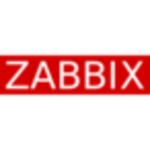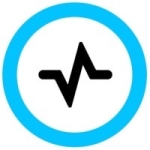What is our primary use case?
Our primary use case is our mobile applications, to make sure that we’re doing end-to-end transaction tracing for both of our mobile apps.
Its performance is fantastic. We have found so many issues with the code and with development; also, with our microservices on the back-end, that we’ve been able to alleviate and optimize. It’s been totally fantastic.
How has it helped my organization?
It increases productivity first of all, and it makes our troubleshooting efforts more efficient. We don’t do the war-room thing, I hate the war-room thing. A lot of the time, when there’s an issue, before they can even assemble the war room, I’m telling them, "Okay, the problem is here, you need to fix this and then we’re good to go."
What is most valuable?
For me the service workflow and the dashboards are the most valuable features, simply because I can know what’s going on in my infrastructure within five minutes, versus two hours.
What needs improvement?
Can it talk to me?
But seriously, the additional feature I would like to see: I did like the old dashboards, the legacy 6.3 for example; the way we were able to do the dashboarding in the client. I would like to be able to see that in the new version of Dynatrace. Other than that everything else is far superior to what we had before.
For how long have I used the solution?
One to three years.
What do I think about the stability of the solution?
I think stability is fantastic. I work very closely with our SE. He and I have developed a very good working relationship. We exchange ideas and he helps me as far as knowing what’s coming up. What’s available, or will be coming up in the future. Then I help him in terms of, this was a custom config that we had to implement, and we feed off of each other.
What do I think about the scalability of the solution?
The only issue with scalability that we’ve had - and it’s not a Dynatrace issue, it’s more an internal issue - is the fact that the data going over the satellite costs a lot of money. What we’ve ended up having to do is to implement separate data centers on each one of the ships. So instead of having one place that everything goes to, we have 40. That’s the only thing as far as scalability is concerned.
I wanted to be able to have a separate managed node - because we have the on-prem SaaS solution - so have the managed node on each ship disburse that data to the shore without causing the data overhead.
How are customer service and technical support?
Our tech support guy is amazing. What I try to do, because I know how I am and I get irritated when someone comes to me and I know that they haven’t even tried to look. They’re just saying to themselves, “Oh, she knows, let’s ask her.” That’s annoying to me because I have a lot that I have to do throughout the day. What I try to do is, I go to the Dynatrace support site, I’m on there every day watching the videos, looking at the articles, reading the white papers. It’s very extensive. The majority of the time I find what I am looking for. If I don’t, I know that I can call Jeff and say, “Hey, I’m looking for this I can’t find it, can you help me?”
It’s a running joke between him and me because he’s our SE - I don’t want to get him in trouble. Technically, I know I’m supposed to call tech support, but if it’s something real quick that I know he’s going to know, I’ll just say, “Hey Jeff, how do I do this?" Or, "I have been looking on the tech support site and I’m getting annoyed, I can’t find it. I know you know. How can I find this?” Then he'll say, "Oh, just do this, and this, and this." He gives me step by step, and then within 15 minutes, the problem’s been resolved.
In terms of regular tech support, I haven’t had any issues. I have a really good working relationship with them, even the tech support guys, they know me. When I submit tickets, they say, “Oh, hey Danielle.” I’m always reading, learning, asking questions. I tell them, "I know I’m being a pain. I’m going to ask you anyway. How do I do this?" They know it’s me, and they respond right away.
Which solution did I use previously and why did I switch?
AppDynamics, and I’ve also worked with New Relic and I’ve also worked with Wily, which was horrible.
I used to work for the government and we used use CA Wily at the Pennsylvania Higher Education Assistance Agency. We used Wily and I hated it, it was awful. Just basic monitoring functionality, we had to write custom code for it.
Then I went to Office Depot and there we switched from AppDynamics to Dynatrace. I was part of that implementation as well. My reaction was, "Oh my God, what is this?" I was totally engaged and at the time I was a WebSphere admin. I wasn’t part of the set-it-up implementation but I was an actual user. Once we got the Dynatrace software on my particular environment I ran with it. I loved it.
From there I came to Royal Caribbean and we were still using New Relic at the time, I was miserable. I talked to my boss, and he had already been looking at and scoping Dynatrace. I just told him, "Look dude, we’ve got to get Dynatrace. Office Depot is using Dynatrace. This is all the stuff that we can do with it." At the point he was sold and we brought it to RCCL. I’ve been using it ever since.
How was the initial setup?
I was involved in the initial setup. The funny is that I worked at Royal in 2014. I implemented the initial - we call it the "legacy" - Dynatrace environment, which is version 6.3. I did that implementation and then I left and went to work at Carnival, hated it there, and then came back to Royal Caribbean and then implemented the new version of Dynatrace.
Setting up the new Dynatrace was different because I was used to the level of complexity. One thing I’ve noticed is that everybody complains about the level of complexity with Dynatrace. Even with the surveys, what I said is, you have to know your infrastructure. That’s one of the things that Dynatrace really forces you to learn and know. They’re a monitoring company. They don’t know how we’ve written our applications, they don’t know how we’ve implemented our microservices, they don’t know what connections we have going into our database. We have to know those things in order to be successful with the set up.
Once you know those things... We’ve automated the entire install practice and we’ve automated the entire implementation process. That’s simply a matter of us or me saying, "Okay, we need architecture diagrams, we need service workflows." I need to know how these calls are being made so that way I can correlate them, and I can write the scripts to do the implementation and then we can get it done.
Which other solutions did I evaluate?
I know they looked at AppDynamics, I know they looked at New Relic. There’s this new company called Datadog that they’ve been looking at. It’s nowhere near the functionality that Dynatrace offers.
What other advice do I have?
In terms of AI, I love the base-lining Dynatrace provides us. It baselines the application over a seven-day period; we have it at the default of seven days. The artificial intelligence is so amazing because it can automatically track each transaction and their response times: how much CPU they use, how much memory, resources that they use. If there’s any deviation from that Dynatrace will tell me like right away. If there’s a deployment and the deployment has increased response time or is taking up CPU or has caused a memory leak, I can say, “Hey guys, you need to look at this, it’s this function on this page in this microservice, in this docker container. You need to go here, you need to fix it, it’s not going live.” It has just increased our productivity off the charts.
We were using siloed monitoring tools before this. The challenge with them is simply the silos themselves. We had separate database monitors, we had separate service monitors. We have a project called Apogee, it’s a routing-type technology. It had its own monitoring. And then we had separate monitoring for the front-end, separate monitoring for the mobile apps. Now, with Dynatrace we have consolidated all that monitoring into one central location.
Regarding one solution that could provide real answers, not just data, we’re already using it now. Like I said, we’re monitoring our SQL databases, we’re monitoring our microservices infrastructure, we’re monitoring our front-end we’re monitoring our mobile apps. It has increased our productivity, we’ve been able to optimize all of our applications. As a matter of fact, I just got a call from our VP because there’s a specific project for the mobile app that we’ve implemented this in. Now, he wants to put it in the rest of the enterprise. Based on what we’ve done for the mobile app project, he wants to roll it out to the entire enterprise.
The most important criterion when selecting a vendor is, are they going to answer my call, because I’m very engaged. If I call you it’s because I have a question. I’m not going to call you unless I absolutely need to, which means that when I call you, you had better either answer the phone or call me back. I am very big on that. Like I said, Jeff has been fantastic, Dave is our sales manager, Chuck Billups is our customer success manager. Between the three of them, if I have an issue, within 15 to 20 minutes I have an answer.
In terms of advice, make sure you know your infrastructure. Make sure you know your applications. So often in the IT industry we see people who say, "Yeah, I’m an architect, I’m a senior engineer. I’m a senior developer." Then, if you ask them, "Okay, what’s the service workflow of this service?" or "What’s the workflow of this application?" or "What’s the workflow from this server to that server?" They can’t tell you. You absolutely have to know those things in order to be able to implement Dynatrace successfully.
Disclosure: My company does not have a business relationship with this vendor other than being a customer.















